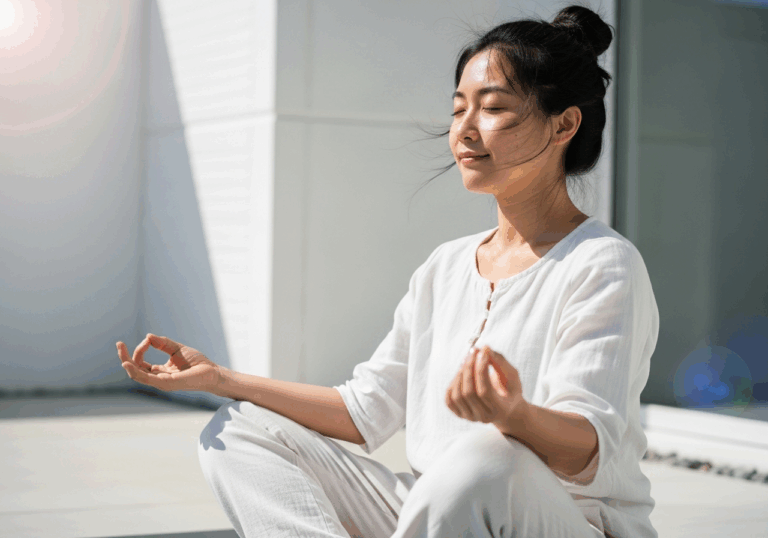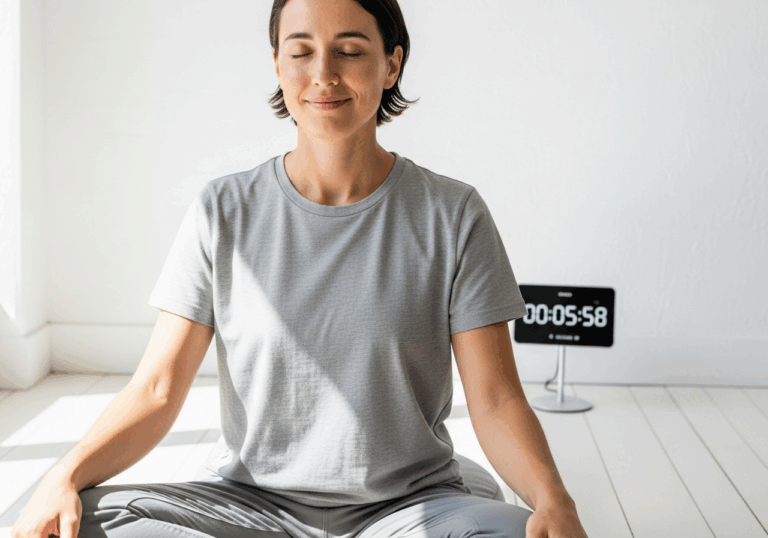Science-Backed Tips
Boost Your Mood with Breathing Techniques
5 minutes of guided breathing can enhance mood by 96%.
📊 Did you know?
💡 Why It Matters
1️⃣
Improving cardiac coherence can enhance vagal tone, which is linked to reduced stress and anxiety.
2️⃣
Higher cardiac coherence has been associated with improved emotional regulation and overall mental health.
3️⃣
Simple breathing techniques can be easily integrated into daily routines, promoting better wellbeing.
✅ Try These Micro-Tips
🎯
Practice guided breathing for 5 minutes daily to enhance mood.
🎯
Incorporate visual or haptic cues during breathing sessions for better results.
🎯
Aim for a breathing rate of 0.1 Hz (approximately 6 breaths per minute) for optimal coherence.
🎯
Use mobile apps or online resources to guide your breathing practice.
📚 The study
This finding is crucial as greater cardiac coherence is linked to enhanced vagal tone, which can lead to reduced stress and anxiety levels.
By improving cardiac coherence, individuals can experience better emotional regulation and overall mental health. The beauty of these breathing techniques lies in their simplicity; they can be seamlessly integrated into daily routines, offering a practical approach to promoting well-being.
As we navigate the complexities of modern life, incorporating such techniques can serve as a powerful tool for enhancing mood and fostering a sense of calm. This study not only highlights the effectiveness of guided breathing but also opens the door for further exploration into how such practices can be utilized to improve mental health outcomes in various populations.
❓ Frequently Asked Questions ❓
Learn more
What is cardiac coherence?
Cardiac coherence refers to a state where the heart rate variability is synchronized with breathing patterns. This state is associated with improved emotional regulation and overall mental health.
How does paced breathing affect mood?
Paced breathing, particularly at a rate of 0.1 Hz (approximately 6 breaths per minute), can significantly enhance mood. This is achieved by increasing the cardiac coherence index, which promotes vagal tone and relaxation.
What is the significance of the 0.1 Hz breathing rate?
A breathing rate of 0.1 Hz is optimal for achieving higher cardiac coherence. This rate has been shown to effectively promote relaxation and improve emotional well-being.
How long should I practice guided breathing for benefits?
Practicing guided breathing for just five minutes daily can lead to noticeable improvements in mood and relaxation. Consistency in practice is key to reaping the benefits.
What methods can enhance my breathing practice?
Incorporating visual or haptic cues during breathing sessions can significantly improve the effectiveness of the practice. These cues help maintain focus and enhance the overall experience.
Can breathing techniques be integrated into daily routines?
Yes, simple breathing techniques can easily be incorporated into daily routines. This makes it convenient to promote better well-being throughout the day.
What tools can I use for guided breathing?
Mobile apps and online resources are excellent tools for guiding your breathing practice. They often provide structured sessions and reminders to help you stay consistent.
What were the results of the study on guided breathing?
The study found that five minutes of guided visual-haptic-paced breathing increased the cardiac coherence index from 0.28 to 0.55, representing a 96% gain. This improvement was particularly pronounced in the visuo-haptic group compared to visual alone.
How does improved cardiac coherence affect stress levels?
Improving cardiac coherence is linked to reduced stress and anxiety levels. This is because higher coherence promotes vagal tone, which is associated with relaxation.
Is there a specific population that benefits from these breathing techniques?
The study involved 32 healthy adults, indicating that these breathing techniques can benefit a wide range of individuals. However, they may be particularly useful for those looking to enhance their emotional regulation and reduce stress.





